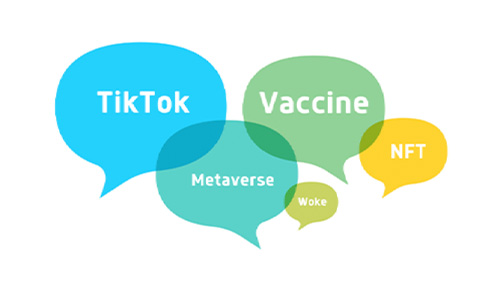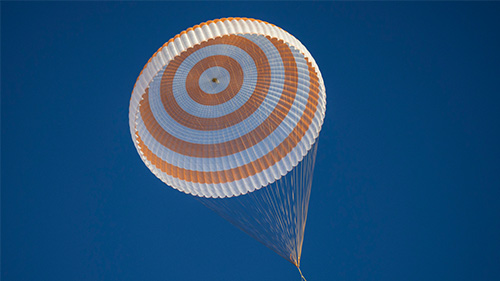AP® Lang: Word of the Year
It's almost the end of the school year! With the exam behind you and your students, take a moment in class to reflect on this past year (while giving...
AP & Honors Mathematics
Explore Wiley titles to support both AP and Honors mathematics instruction.
Literacy Skills & Intensive Reading
Connections: Reading – Grades 6–12
Empower student success with a proven intensive reading program that develops strong reading skills in striving readers.
Drama, Speech & Debate
Basic Drama Projects 10th Edition
Build students’ confidence and competence with comprehensive, project-based theatre instruction.
Literature
Connections: Literature
Support learners as they study dynamic, relevant texts and bring the richness of diverse voices to students through literature.
Literature & Thought
Develop critical thinking, reading, and writing across literacy themes, genres, historical eras, and current events.
Language Arts
Vocabu-Lit® – Grades 6–12
Help students build word power using high-quality contemporary and classic literature, nonfiction, essays, and more.
Connections: Writing & Language
Help students develop grammar, usage, mechanics, vocabulary, spelling, and writing and editing skills.
Reading/English Language Arts
Measuring Up to the English Language Arts Standards
Incorporate standards-driven teaching strategies to complement your ELA curriculum.
English Language Learners
Measuring Up for English Language Learners
Incorporate research-based best practices for ELLs with an approach that includes a focus on language acquisition strategies.
Mathematics
Measuring Up to the Mathematics Standards
Incorporate standards-driven teaching strategies to complement your mathematics curriculum.
Foundations
Measuring Up Foundations
Help students master foundational math skills that are critical for students to find academic success.
Science
Measuring Up to the Next Generation Science Standards
Give students comprehensive NGSS coverage while targeting instruction and providing rigorous standards practice.
Assessment
Measuring Up Live
Deliver innovative assessment and practice technology designed to offer data-driven instructional support.
For a better website experience, please confirm you are in:

Cultural diffusion and cultural syncretism are two important concepts in the AP® World History curriculum. Because of its importance, I’ve developed this activity as a fun and creative way to introduce or review the concept of cultural diffusion. It is best used at the beginning of the year as an introductory lesson but can also be used as a review activity near the end of the year.
Part I asks students to look at an image and identify the country they would be in using their knowledge of the world and image context clues. The images include famous pieces of architecture, monuments, buildings, or landmarks. This first section is a set up for Part II, but it’s important to stress the cultural aspects and any applicable stories about empires/dynasties associated with each of the images. For example, this means discussing Shintoism in Japan and the importance of the Kaaba in Mecca.
Part II of this activity introduces the concept of cultural diffusion and is more challenging. Students once again use context clues to guess the country in the world where these images would be found—and are given the definition of cultural diffusion as a hint. The answers are difficult, and the longer you play, the more students figure out that their first guess is usually not the correct one. For example, students might recognize a French cathedral and put France. However, the cathedral is found in Vietnam due to the French influence in Southeast Asia during the era of imperialism. Another example shows a colosseum leading you to believe you are in Rome, but then you learn that the Roman empire included parts of North Africa. The colosseum shown is in Tunisia. As the game progresses, teachers can ask students to identify the cultural influences they see even if they don’t end up getting the correct location—leads to great classroom discussion.
Pro Tip: To keep it light and because of the difficulty involved, I give out prizes for students that identify the correct countries in this part. (Since I usually play this at the start of the year, my prizes are individual letters from the previous year’s students offering helpful tips on how to be successful in AP® World).
Finally, before I end this activity, I briefly introduce the students to another AP® World History concept, cultural syncretism. I define cultural syncretism and then list several examples in an attempt to get students to understand the difference between diffusion and syncretism. In my experience, I have found that giving the students some specific examples of cultural diffusion and cultural syncretism is very useful.
Download activity below!
Dave Drzonek is in his 22nd year of teaching at Carl Sandburg High School in Orland Park, Illinois, and has been teaching AP® World History since 2006. He is currently a Senior Reviewer and Writer for the AP® World History: Modern coursebook by AMSCO® and has developed and delivered AP® World History content for the online video-based AP® test prep service GetAFive. He has also been a reader for the Advanced Placement® World History Exam. He earned his M.A. in Teaching, Curriculum and Instruction at Governors State University in Illinois. He believes that there is no greater way to spend a lifetime than teaching.

It's almost the end of the school year! With the exam behind you and your students, take a moment in class to reflect on this past year (while giving...

The middle of the school year is a unique crossroads for AP Social Studies teachers. The initial enthusiasm of fall has faded, the intensity of...

It’s not a secret that people compare American schools with other countries’ schools, and Chinese schools are known as some of the strictest in terms...

As we get closer to the AP® World History Exam, students will begin to stress about the required essays they will write as part of the exam. The...

Experienced AP World History teacher Dave Drzonek and AP World History Exam table leader Charlie Hart discuss what students did well and what they...

The teaching of AP® World History can be a daunting task at times. Teachers are asked to teach over 800 years of historical content and then develop...

This blog entry is designed to provide some hints to help your students improve their writing on the free-response section of the exam. The...

Teaching a young, eager, and naive student how to write a sophisticated DBQ is like teaching a similarly inexperienced athlete how to successfully...

Join AP experts Brandon Abdon, Colin Baker, and Bob Topping to discover scaffolded approaches to teaching the APUSH, AP Euro, and AP World History...

The best part of being an ELA teacher is getting to expose students to a diverse set of stories. To appreciate the new cultures and heritages more...

This interactive webinar focuses on scaffolded approaches to the finishing touches necessary for higher-level success on the LEQ and DBQ portions of...

Unlock the power of historical thinking and writing as you elevate complexity and engagement in AP History classrooms. Presented by experienced AP...
